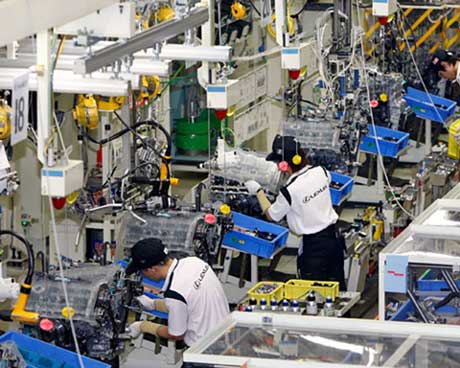Increased labor productivity crucial to future wealth
VGP – Việt Nam has experienced a period of rapid economic and social change which has both been influenced and shaped by dynamic employment and labor market trends. After becoming a middle-income country, it needs to do a lot of things, including raising labor productivity.
 |
|
Illustration photo |
In 2009, the labor force totaled 47.7 million, or 63 % of the population of 87 million. The workforce consisted of 24.6 million men and 23.1 million women, mostly young people between the age of 15 and 24.
Việt Nam ranked 75th among 133 countries worldwide in 2009-2010 in the World Economic Forum’s Global Competitiveness Index, after securing the 70th place in 2008-2009.
With regard to labor productivity in Southeast Asia, Singapore’s third place was the highest, followed by Malaysia (24), Thailand (36) and Indonesia (54).
The low level of productivity, therefore, sparks a concern for Việt Nam as its future competitiveness will deal with requirements for stronger market integration and connecting with the regional and global production systems and value chain.
As a result, raising labor productivity is a must for the country to ensure that it is able to continue with the taking off course after listed as a middle-income country.
Firstly, each unit, business and public agency needs to think about how it could do to raise labor productivity in order to work out the most suitable “labor norms” for each of them.
Secondly, consultation must be done well right at the time of recruitment in order to encourage employees to have comfortable, self-confident and optimistic sentiments.
Thirdly, periodic training courses should be organized for laborers working in the same system so that they can interchange their jobs in case of necessity. Other training courses to help laborers get familiar with new production models and new technology are also necessary.
Fourthly, there should be coordination between new recruits and experienced and skilled laborers in a bid to secure the highest productivity and encourage them to devote more energy to their companies.
Fifthly, improving labor productivity must be carried out together with increasing laborers’ incomes. Laborers’ incomes should be raised to proper rates in accordance with profits they generate through effective working.
Last but not least, it is also necessary for Việt Nam to reduce “disguised unemployment”- the situation when two many people do the same job. For example, this unit only needs five workers but it currently has seven, meaning the redundancy of two workers in doing the required productivity.
If this situation is addressed, businesses would reduce substantially production costs while laborers are given chances to perform their capacity and creativeness to raise their incomes.
The McKinsey Global Institute (MGI) said three factors had contributed to two-thirds of Việt Nam’s 7% annual GDP growth from 2005 to 2010. They were the expanded labor pool, the structural shift away from agriculture and the improvement of productivity within sectors, of which the first two forces have less and less power to drive the economy to further expansion.
According to Việt Nam’s official statistics, the country’s labor force growth will probably decline to about 0.6% a year over the next decade, down from 2.8% between 2000 and 2010.
By Hương Giang

